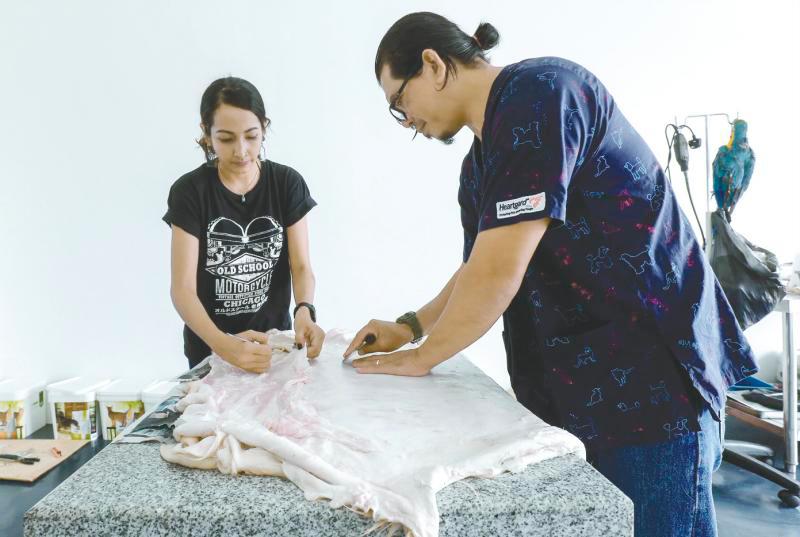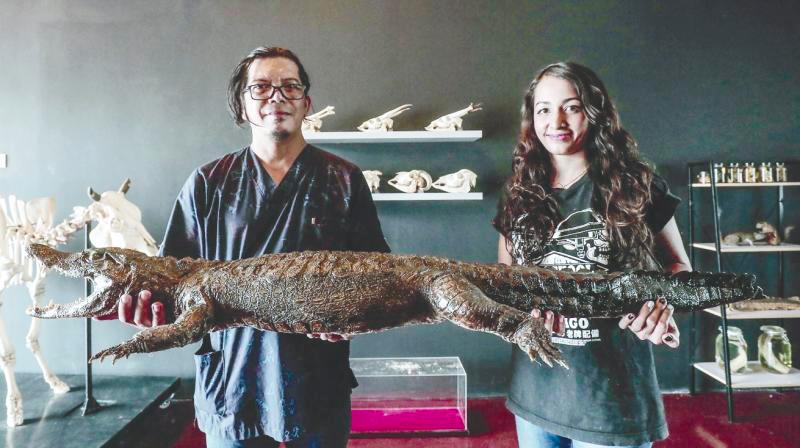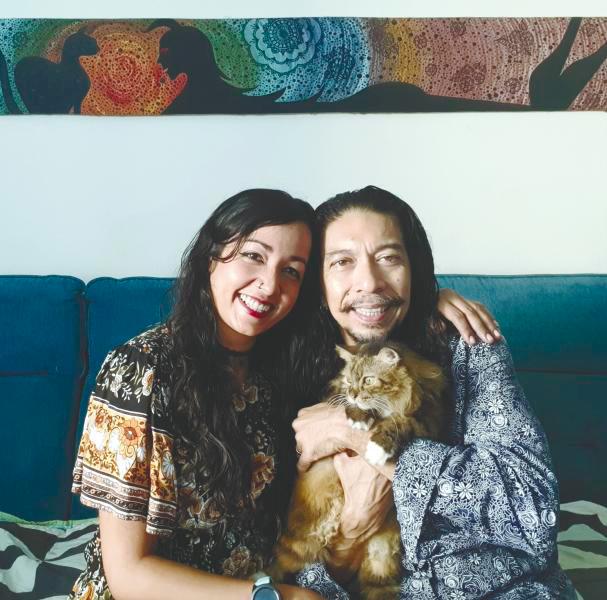ACCORDING to taxidermist Anna Razak: “I love that I can make art from dead things.” Only equipped with her interest in taxidermy and preservation, Anna took to the internet to conduct her own research. With the power of Google, the 35-year-old found and got in touch with her current business partner, veterinarian Dr. Andy Norman.
Aside from his regular veterinary practice, Dr. Norman also works with museums on taxidermy projects. When Anna contacted him, he said he needed a trainee because it was hard work for one man. Within a couple of years, the two became business partners.
“He has encyclopedic knowledge when it comes to animals,” Anna says of her mentor.
Her own background is in psychology, but the Penangite is also heavily involved in art. She moved to KL to complete her Masters and became a lecturer after graduation.
When she started, Anna first dabbled in body art (henna) and then moved into paintings, murals and crafting and eventually came across taxidermy, a skill she thought would come in handy for an artist.
“It has been a dream since I was a child. I have always been intrigued with bones, how in some cultures they have shrunken heads. I’m just fascinated by dead things. I’m really into creepy stuff. The creepier the better for me,” she laughs.
While most customers approach the duo for personal reasons, they also receive a fair share of requests from antique collectors who want them to restore certain specimens.

Taboo art form
The reactions towards their work have been split.
“Even before I started, I knew this art form would not be for everyone. My paintings are really mellow, they are colourful, bright, intricate and the opposite of my taxidermy work,” says Anna.
The exposed flesh and gore in taxidermy is not something all can appreciate. Where people see death, Anna sees potential for art.
“Most Malaysians are super religious and with religion, there are certain boundaries. But at the same time, there are people who are semi-religious and accepting of this art form. So it’s a 50-50 acceptance rate,” she says in regards to the acceptance of taxidermy in Malaysia.
While there are those who believe pets should be disposed of naturally, Anna points out that she is simply trying to promote an alternative to cremation or burial of pets.
While maintaining an understanding that everyone has different beliefs, she takes on the role of an educator to spread more awareness about this art of preservation.
“Grief is a personal thing and there is no one way a person can grief. Who are we to say there’s a wrong way to grief? To me, taxidermy is a beautiful way to celebrate their life and memorialise it. I am very sentimental when it comes to pets,” says Anna, who drew inspiration and motivation from her lovely 15-year-old cat.
On a personal note, the support of Anna’s husband is evident. She enthusiastically gushes over her cat and her husband, both of whom have helped her become the person she is today.
“As for my parents, they were weirded out! Especially my mum, who was very against what I did. I do my best to educate her and normalise it, and she is now a little more open to it. Of course, she would still prefer me to work corporate,” Anna chuckles.

The process
The entire procedure starts with skinning the animal.
“It is exactly like taking the socks off your feet. After that, I would begin fleshing, which is where I take out the remaining fat stuck on the inside of the skin. Then I clean it, put preservatives on it, and then begin stuffing the animal,” explains Anna.
It is then time for mounting, which is a process that involves setting the animals in a desired pose. Once mounted, the specimens are left to dry for two to three weeks.
While the process of skinning to stuffing takes up to five hours, it can take up to three weeks for the work to be completed before they place it in the glass display case.
Anna highlighted that they always advise clients to wrap and freeze their specimens to delay the rotting process. Decomposition happens quickly, especially in Malaysia’s humidity, and a squirrel left unfrozen for a day would stand a higher chance of the fur ‘slipping’, which is when the fur doesn’t stick to the pelt.
When it comes to pricing, the taxidermists first look at the species they are handling. “Is it a mammal, reptile, or fish? Then it goes into the difficulty level. For example, a fish is one of the hardest species to preserve because its skin is really thin so there’s a lot more process in preserving a fish. However, if you were to preserve a normal-sized squirrel, I can provide an estimate of RM400-600, and this includes the glass display case and landscape that I make,” shares Anna.
The opportunities and challenges
Working with museums has afforded them with some fantastic opportunities to work with beautiful specimens.
“I think the craziest one would be when I was doing a class with Muzium Shah Alam to teach them how to preserve a crocodile. It was a 12 ft long local Buaya Tembaga and as I was teaching the employees, they were helping me to preserve it as well. It was one of the best teaching gigs I have gotten as a taxidermist,” she enthused.
A huge problem with doing taxidermy in Malaysia is the lack of tools and materials, Anna says. As a matter of fact, she had to teach the museums here how to make their own forms due to shortage of supplies. Although it is possible to ship the forms, it will break the bank.
In contrast, Anna’s taxidermy studio in Europe has easy access to what they need and items like squirrel forms can be easily purchased, which goes a long way in saving time and cost.
“We tried making our own forms, using coconut husks, cotton and anything you can use as stuffing. Most of our tools, like our fleshing knives, are custom-made by ourselves,” she added.
As a fierce animal lover and a licensed taxidermist under Perhilitan, Dr. Norman and Anna do their part to report suspicious behaviour. When they receive calls from illegal hunters who contact the taxidermists to preserve their kill, they pass the caller’s details along to Perhilitan.
On top of that, the duo also get requests from international taxidermists looking to export animals to Malaysia without paperwork. These, too, get reported, a small but impactful move to combat Malaysia being one of the highest exporters for the illegal animal trade.
A celebration of life
“Pets are better than humans, actually,” Anna says without hesitation when asked to describe the connection between pet and owner. “To pet owners, their pets are family. It is a tremendous honour for me to preserve their family member.”
Unfortunately, they often have to deal with the awful misconception that they are murderers. Many believe that taxidermists kill to preserve instead.
Anna shares about the time she was working on a local Ular Batik (python) that a customer found dead in a drain. The specimen was intact and the customer simply wanted to preserve her rare find. Those who saw the snake immediately began asking Anna why and how she killed it – an understandably frustrating experience for the animal lover.
“Don’t knock on this art form. It’s quite new in Malaysia but don’t be afraid of this. It’s normal and without us, you wouldn’t get to study the animals we see in museums today!” Anna concludes.









